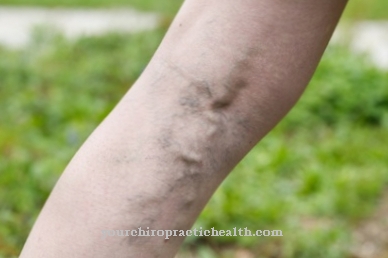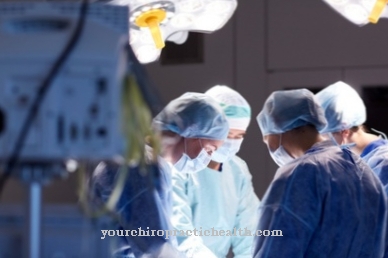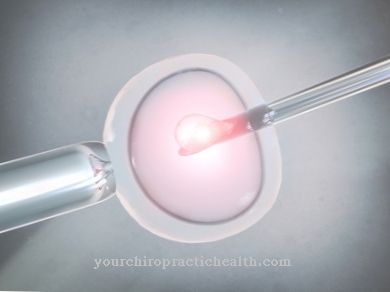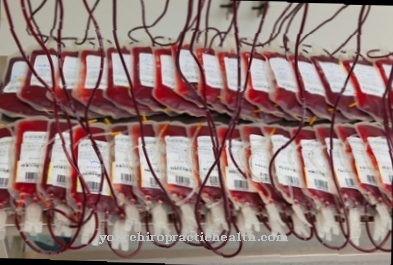Dentists normally do everything they can to keep a tooth as long as possible. But sometimes it is necessary to extract teeth for various reasons.
What is the extraction?
.jpg)
The medical term extraction comes from the Latin word "extrahere" and means to pull out. Extraction is one of the most common surgical procedures in dentistry. Extraction is the mechanical extraction of a tooth from the jaw without further surgical procedures.
The tooth is not pulled out directly, but after a local anesthetic is first loosened in the gum with the help of various dental instruments, then carefully moved back and forth several times and only grasped with special pliers and removed from the jaw after sufficient mobilization. One of the most common extractions in a dental office is the removal of wisdom teeth. Due to special circumstances, it may sometimes be necessary to surgically remove teeth under general anesthesia.
Function, effect & goals
There are several factors why a tooth can no longer be preserved and needs to be extracted, such as: B. to make room for other teeth, as is often the case with orthodontic measures. The most common reasons why teeth need to be extracted are
- severely loosened teeth (e.g. due to periodontitis)
- Inflammation in the root of the tooth or in the tooth holding apparatus in periodontitis
- Longitudinal or transverse fractures on tooth crowns or roots
- Teeth displaced in the jaw, which cause discomfort and possibly disturb other teeth
- Space requirements for orthodontic treatments
- too many teeth in the jaw
- root canal treatment does not eliminate the discomfort
- Caries at the tooth root with possible cyst formation
- extreme destruction of the hard substance of a tooth
- Compensation for missing teeth in the opposing jaw to avoid a bad bite
Before an extraction, if not already done, an X-ray is taken in the dental practice and the patient is informed about the risks and behavior involved in a tooth extraction. In many cases, as a preventative measure, patients will take an antibiotic a few days before and after the procedure to help prevent infection.
Before the tooth is extracted, the patient is given a local anesthetic. With teeth in the upper jaw, this is done by means of infiltration anesthesia at several points in the area of the respective tooth. A conduction anesthesia is performed on teeth in the lower jaw, in which the anesthetic is injected into a conduction path of the lower jaw nerve. This will numb the half in which the tooth to be extracted is located.
When the tooth is sufficiently numbed, it must first be mobilized before it can be removed from the jaw. To do this, the dentist uses levers and pliers to slowly loosen the tooth. Through the movement, he notices on which side the tooth is giving way. After sufficient loosening, the tooth is removed from the jaw with pliers. Because blood vessels in the gums are injured by the extraction, the wound will bleed after the procedure and the patient has to bite on a sterile swab for 10 to 30 minutes to stop the bleeding.
If necessary, he can be prescribed a pain reliever if he doesn't have one in the house. The wound healing is checked again in the days after the operation. In unfavorable conditions, teeth sometimes have to be removed and the wound then sutured. Wisdom teeth that have not yet erupted are often operated on in this way.
You can find your medication here
➔ Medicines against tartar and tooth discolorationRisks, side effects & dangers
In most cases, tooth extraction goes smoothly and the wound heals after a few days. Patients can do a lot to avoid complications. After the extraction, the cheek should be regularly cooled with cold packs or washcloths for the first 24 hours so that no swelling occurs. Wait until the anesthetic has subsided before eating.
As long as the wound has not healed properly, soft food is better, preferably no grains. The teeth can be brushed normally except for the wound. Anyone using an oral irrigator must not rinse in the wound area, as otherwise no wound plug can form. During the period of wound healing, dairy products should be restricted because lactic acid bacteria can prevent the wound plug, which is important for healing. Because of the increased tendency to bleed and the possibility of secondary bleeding, coffee, alcohol and cigarette consumption should be restricted on the day of extraction and, if possible, the day after.
Sports and strenuous physical work should also be avoided. If there is significant bleeding, the dentist should be visited. Pain about 3 days after the extraction can be a sign of alveolitis sicca. One of the most common complications that can occur is the breaking off of carious teeth during the procedure, combined with the risk of injuries from the tooth splinters. If tooth fragments are overlooked, purulent inflammation can form. If the jawbone is injured, it can lead to an inflammation of the jawbone.
There is a risk of bleeding when taking blood thinners. Injury to the jawbone by extraction can lead to denture instability in the case of denture wearers. In difficult conditions, neighboring teeth can be injured. The symptoms should have improved no later than 3 to 5 days after pulling a tooth.












.jpg)



.jpg)










.jpg)
